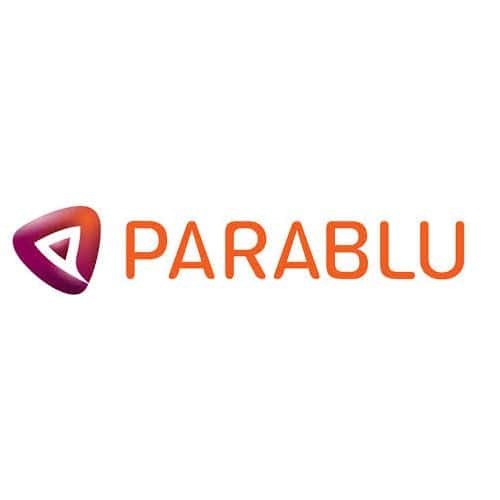Data Mirroring: Enhancing Data Protection with Microsoft 365 Cloud Backup Solutions
Body
Data Mirroring: A Cornerstone of Modern Data Protection
In an era where data breaches, hardware failures, and accidental deletions can disrupt operations and cause significant losses, robust data protection strategies are more crucial than ever. Among the various methods to safeguard data, data mirroring stands out as a powerful and effective approach. But what exactly is data mirroring, and how does it compare to other data protection techniques? Additionally, how do modern solutions like Microsoft 365 cloud backup solutions fit into the picture? Let’s explore these questions in detail.
Understanding Data Mirroring
Data mirroring is a method that involves creating exact copies of data on different storage devices simultaneously. This approach ensures that any changes made to the original data are mirrored in real-time, creating a duplicate that is continuously updated. If the primary storage system encounters an issue, the mirrored copy serves as an immediate backup, allowing for minimal disruption and data loss.
The essence of data mirroring is its redundancy. By having a real-time copy of your data, you mitigate the risks associated with hardware failure, corruption, or accidental deletion. Mirroring is often employed in high-availability systems where uptime and data integrity are critical.
Benefits of Data Mirroring
-
Immediate Data Recovery: One of the most significant advantages of data mirroring is the ability to recover data almost instantaneously. Since the mirrored copy is updated in real-time, you can quickly switch to the backup without experiencing extended downtime.
-
Enhanced Data Integrity: Data mirroring ensures that the mirrored copy is an exact replica of the original, which helps maintain data integrity. If discrepancies arise, they can be detected and corrected promptly, reducing the risk of corrupted data affecting your operations.
-
Minimized Downtime: In business environments where operational continuity is essential, data mirroring plays a critical role in minimizing downtime. Should a failure occur, the mirrored data allows for swift recovery and continuation of business activities with minimal interruption.
Data Mirroring vs. Traditional Backup Methods
While data mirroring offers real-time replication and immediate recovery, traditional backup methods involve periodic snapshots of your data. These backups are typically scheduled at regular intervals, such as daily or weekly. Although traditional backups are useful, they may not always capture the most recent changes, leading to potential data loss between backup windows.
Data mirroring, by contrast, provides continuous protection, ensuring that your backup is always up-to-date. This real-time aspect makes it particularly valuable for applications requiring constant data availability and rapid recovery capabilities.
Integrating Data Mirroring with Cloud Backup Solutions
Modern data protection strategies often involve cloud backup solutions, which offer scalability, remote access, and cost-effectiveness. Cloud services have become integral to data protection, providing reliable and accessible storage options that complement traditional and mirrored backup approaches.
Microsoft 365 cloud backup solutions exemplify how cloud technology enhances data protection. Microsoft 365 offers comprehensive backup and recovery features for its suite of productivity tools, including email, documents, and collaboration platforms. Integrating data mirroring with Microsoft 365 cloud backup solutions can create a robust and redundant backup system.
How Microsoft 365 Cloud Backup Solutions Enhance Data Mirroring
Microsoft 365 cloud backup solutions provide several advantages that align well with data mirroring:
-
Automatic Synchronization: Microsoft 365 ensures that your data is continuously synchronized across devices. This automatic synchronization complements data mirroring by ensuring that the cloud-based backup is always up-to-date with the latest changes.
-
Scalability and Flexibility: Cloud-based backup solutions like Microsoft 365 offer scalable storage options that can grow with your needs. This flexibility allows you to mirror data not just locally but also in the cloud, providing an additional layer of protection.
-
Remote Access and Recovery: With cloud backups, you can access and recover your data from anywhere. This feature is particularly useful in scenarios where local data mirroring may not be feasible, offering a remote solution that complements your on-premises backup strategy.
-
Enhanced Security: Microsoft 365 incorporates advanced security features to protect your data. By integrating data mirroring with these cloud backup solutions, you benefit from both real-time data replication and robust security measures, ensuring comprehensive protection.
Setting Up Data Mirroring with Cloud Backup Solutions
To implement data mirroring effectively, especially in conjunction with cloud backup solutions like Microsoft 365, follow these best practices:
-
Choose the Right Tools: Select data mirroring and cloud backup tools that align with your specific needs. Ensure compatibility with your existing infrastructure and consider options that offer seamless integration with Microsoft 365.
-
Configure Real-Time Sync: Set up real-time synchronization between your primary storage and mirrored backup. For cloud-based backups, ensure that Microsoft 365 is configured to automatically back up data from your devices and applications.
-
Regularly Test Backups: Periodically test your data mirroring and cloud backup setup to ensure that both the local and cloud-based backups are functioning correctly. Conduct regular drills to verify that data recovery processes are smooth and effective.
-
Monitor and Maintain: Continuously monitor the performance of your data mirroring and cloud backup solutions. Regular maintenance and updates are essential to keep your backup system secure and efficient.
Conclusion
Data mirroring is a powerful technique for ensuring the reliability and availability of your data. By creating real-time copies of your data, it provides immediate recovery and minimizes downtime. When combined with modern cloud backup solutions like Microsoft 365 cloud backup solutions, data mirroring becomes even more effective. The integration of real-time data replication with scalable and secure cloud storage creates a comprehensive data protection strategy that can safeguard against a wide range of risks.
In today’s data-centric world, leveraging both data mirroring and advanced cloud backup solutions is essential for maintaining operational continuity and protecting valuable information. Embracing these technologies will help you stay resilient in the face of data challenges and ensure that your data remains secure and accessible.











Comments